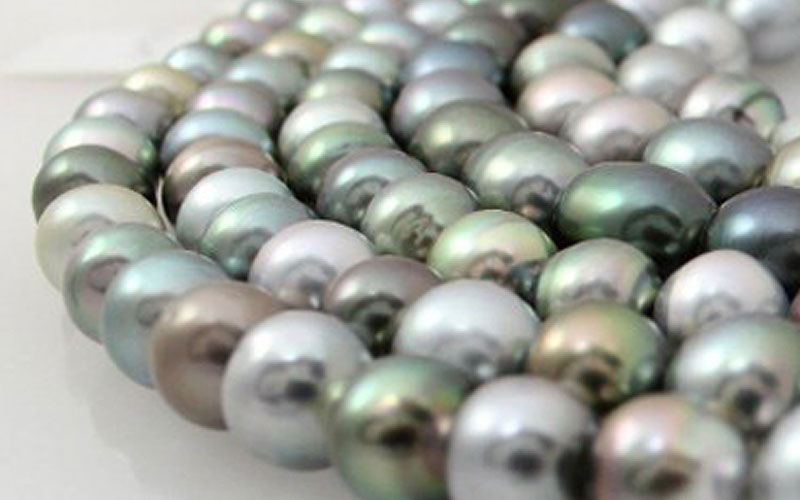 Pearls – unlike any other gem – are organic, created inside a living mollusk. (A GIA research article)
Pearls – unlike any other gem – are organic, created inside a living mollusk. (A GIA research article)
Pearls – unlike any other gem – are organic, created inside a living mollusk. Regardless if it forms naturally or is cultured with care, pearls develop beneath the water’s surface amidst plants, animals and an often fragile ecosystem. But have you ever wondered if pearls can help the environment? That’s the question at hand for a group studying the ecological effects of marine cultured pearls.
Dr. Saleem Ali, director of the Centre for Social Responsibility in Mining at the University of Queensland, Australia, visited Carlsbad, CA on Friday, June 7, 2013 to share his research on the benefits of pearls as a renewable gem and sustainable pearl farming practices with students studying at GIA. Dr. Ali is part of a team researching pearls and their effect on the environment.
The research group works directly with pearl farmers to understand the pearl supply chain and will use their research to create a set of sustainability standards for the industry. The three-year project, funded by the Tiffany & Co. Foundation, is exploring the environmental impact of pearl farming and ways it can improve water quality, positively impact coral reef conservation and reduce overfishing.
Already midway through the project, Dr. Ali and his team have identified a distinct positive connection between pearl farming and conservation. According to their research, the need for clean water is an essential part of the cultured pearl industry. “If you want a good quality marine pearl, you need happy oysters, and happy oysters need pollution-free waters,” Dr. Ali said.
Other environmental factors – such as marine life – also play a significant role. Dr. Ali and his team examined the effects of pearl farming on coral reefs to learn what practices can help sustain the reefs. The critically endangered ecosystems are home to many species of fish that help maintain ocean biodiversity and provide nutrients for mollusks. Climate change and bleaching from pollution threaten these delicate reefs. Dr. Ali and his team study all potential threats since even small things – such as the type of netting material used in pearl farming – can have a negative effect on the health of coral reefs.
Dr. Ali also reviewed the impact of pearl farming on local economies. He said their research shows that pearl farming diversifies these economies and is able to coexist with tourism and the fishing sector. In fact, pearl farming also provides more income opportunities for residents so they don’t have to rely on fishing, which reduces the risk of overfishing.
As the project continues in the next year and a half, Dr. Ali and his team will explore opportunities to brand pearls as sustainable and promote their environmental benefit. “Pearls are unique – they are the only renewable gemstone in the human timescale,” said Dr. Ali. Since 1999, however, pearl exports in French Polynesia have increased, but value decreased. The team hopes that if consumers know pearls are a renewable resource and can improve the environment, their value will increase.
Students were very interested in how Dr. Ali’s research could affect the pearl industry. One student, whose family works in the cultured pearl industry, said she was eager to share what she learned back home. “It was great to get a different perspective… and know there is a way to be more sustainable in this industry,” she said.
Dr. Ali emphasized that sustainability is a natural part of pearl farming – the key is to allow everything to exist together. There is “a lot of potential” for students planning to enter the cultured pearl industry, he added.
See the original article here.

